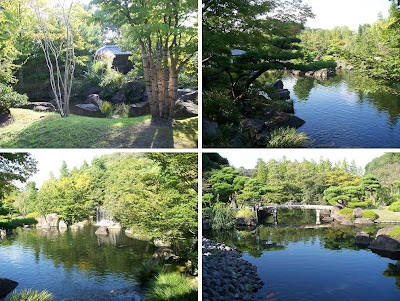
Universal Studios Japan is a good place to start. Like it's counterparts in Florida and California, USJ uses cartoon characters and famous Hollywood movies as its mascots and theme rides. The park is even decorated for Halloween (my host family didn't know what Halloween was until they hosted a student).

However, in the US you can't go to the Osaka Takoyaki Museum or eat at a Mos Burger in the Universal Citywalk. Both are just a short walk from the Hard Rock Cafe and gift shop.


The "Japanese version" of Universal Studios also features different cartoon characters from its American counterpart. Instead of Bugs Bunny, Tweety, and Sylvester covering every street corner and gift shop, characters like Woody Woodpecker, Snoopy, and Elmo are popular. It seems to me that Japanese tastes in American cartoons gravitates towards those that are more like their own animation. Snoopy, for example, is drawn in much the same way as Hello Kitty (who can also be found in USJ).


USJ also features what I would consider your standard Universal Studios rides; Jurassic Park, Back to the Future, E.T., Jaws, and Spider Man. But Japan also has places like Waterworld and the Land of Oz and shows featuring Woody Woodpecker, Peanuts characters, and Backdraft.
Exactly why these movies and characters are so popular among Japanese people, I can't say for sure. I can only speculate that perhaps there are certain ideas or characteristics about each of these that relate more to the way of life in Japan than they do in America.












